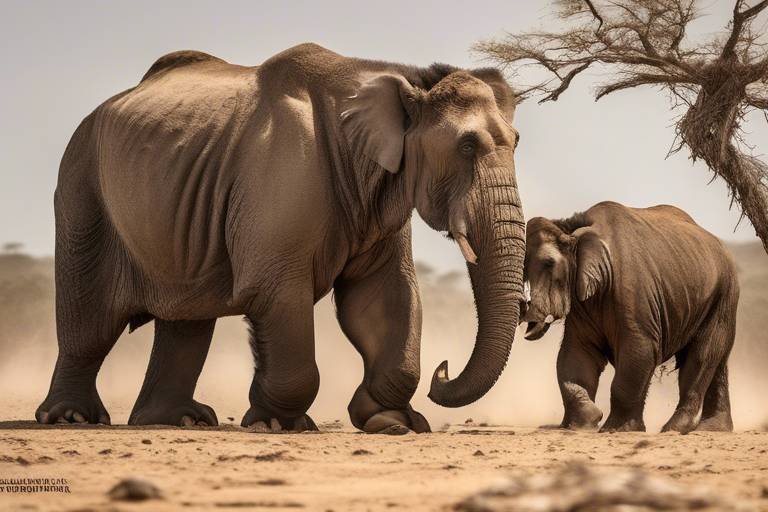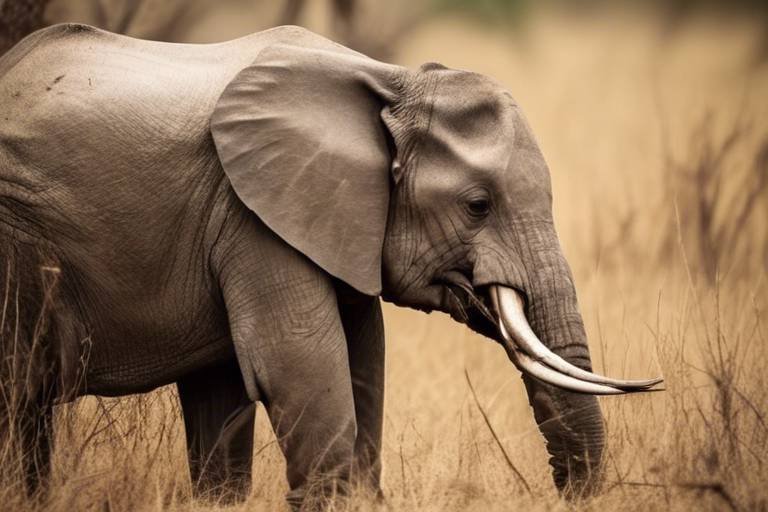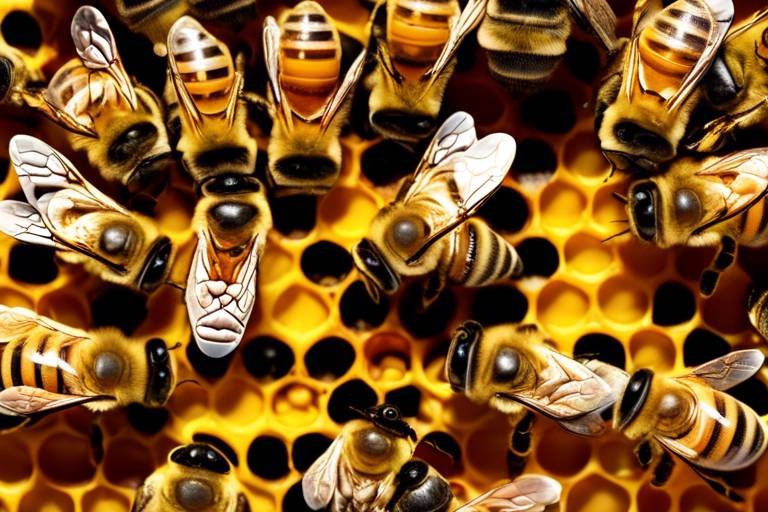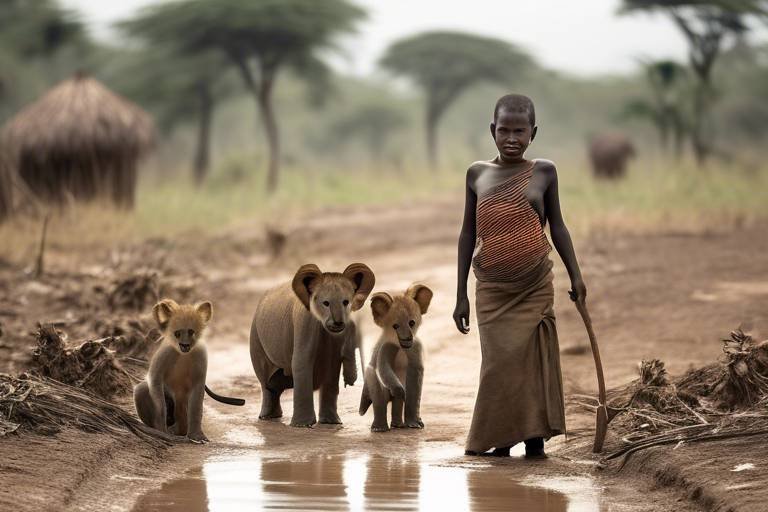Last Leopards - Conserving the Most Elusive Big Cat
Leopards, those magnificent and elusive big cats, have long captured the imagination of wildlife enthusiasts and conservationists alike. With their stunning spotted coats and stealthy hunting skills, they embody the wild spirit of Africa and Asia. However, the reality is that these beautiful creatures are facing an uncertain future, and it is our responsibility to ensure their survival. In this article, we will explore the current status of leopards, the conservation efforts underway, and the challenges they encounter in their natural habitats. By understanding the plight of leopards, we can appreciate their role in maintaining biodiversity and ecological balance.
Leopard behavior is as complex as it is fascinating. These solitary hunters are masters of stealth, employing a variety of techniques to catch their prey. They are known for their incredible ability to adapt to different environments, which is evident in their diverse hunting strategies. For instance, leopards often hunt at night, using their keen senses to stalk and ambush unsuspecting animals. Their territorial instincts are strong; they mark their territory with scent markings and vocalizations, ensuring that other leopards know their boundaries. Socially, leopards are quite unique among big cats, as they tend to be solitary except during mating season or when a mother is raising her cubs. This solitary nature makes them elusive and challenging to study, adding to the intrigue surrounding these magnificent creatures.
Leopards inhabit a wide range of ecosystems across Africa and Asia, showcasing their adaptability. From the savannas of sub-Saharan Africa to the jungles of India, these big cats thrive in diverse environments. Their preferred habitats include forests, grasslands, and mountainous regions, which provide ample cover for hunting and shelter. However, habitat loss due to human encroachment and deforestation poses a significant threat to their populations. As urban areas expand and agriculture takes over wild spaces, leopards are increasingly forced into smaller and fragmented habitats. This not only reduces their chances of survival but also disrupts the delicate ecological balance they help maintain. Understanding their habitat needs is crucial for developing effective conservation strategies.
Leopards face a multitude of threats that jeopardize their existence. One of the most pressing issues is poaching, driven by the demand for their beautiful fur and body parts. Additionally, habitat destruction from logging, agriculture, and urban development continues to shrink their living spaces. Human-wildlife conflict is another significant challenge, as leopards sometimes prey on livestock, leading to retaliatory killings by farmers. These factors combined create a perfect storm that places immense pressure on leopard populations worldwide. Without immediate action and protective measures, these stunning big cats could face dire consequences.
Fortunately, various organizations and initiatives are dedicated to leopard conservation. From local grassroots movements to international wildlife organizations, efforts are underway to protect these elusive big cats and their habitats. Community involvement is vital; engaging local populations in conservation efforts helps create a sense of ownership and responsibility towards wildlife. Innovative strategies, such as habitat restoration and anti-poaching patrols, are being implemented to safeguard leopard populations. Successful case studies have shown that when communities are involved, the outcomes are significantly more positive. For example, in certain regions of Africa, community-based tourism has provided economic incentives for preserving leopards and their habitats.
In today’s rapidly evolving world, technology plays a crucial role in wildlife conservation. Tools such as GPS tracking and camera traps are revolutionizing the way we monitor leopard populations. By tracking their movements, researchers can gather valuable data on their behavior and habitat use. This information is essential for developing targeted conservation strategies. Moreover, data analysis helps identify patterns and trends that can inform policy decisions. The integration of technology into conservation efforts not only enhances our understanding of leopards but also increases the effectiveness of protective measures.
Local communities are at the heart of successful leopard conservation. When communities are engaged in conservation efforts, they become stewards of their environment, fostering coexistence between humans and wildlife. Education and awareness programs play a key role in this process, helping people understand the importance of protecting leopards and their habitats. By promoting sustainable practices and providing alternative livelihoods, communities can reduce their reliance on activities that harm wildlife. This collaborative approach not only benefits leopards but also enriches the lives of the people living alongside them.
Despite the numerous challenges leopards face, there are inspiring success stories that highlight the potential for positive change. For instance, in some regions, concerted conservation efforts have led to a resurgence in leopard populations. Innovative projects, such as wildlife corridors that connect fragmented habitats, have proven effective in allowing leopards to thrive. These success stories serve as a beacon of hope, demonstrating that with dedication and collaboration, we can make a difference for these magnificent big cats.
The future of leopards may seem uncertain, but proactive measures can pave the way for their survival. Global collaboration is essential in addressing the myriad challenges they face. By uniting governments, organizations, and communities, we can implement effective conservation strategies that ensure the long-term survival of leopards. It’s not just about saving a single species; it’s about preserving the intricate tapestry of life that leopards represent. Together, we have the power to protect these elusive big cats and the ecosystems they inhabit.
- What are the main threats to leopards? The primary threats include poaching, habitat destruction, and human-wildlife conflict.
- How can I help in leopard conservation? You can support conservation organizations, raise awareness, and promote sustainable practices in your community.
- Are leopards endangered? While leopards are not classified as endangered, certain subspecies are threatened, and their populations are declining in many areas.
- What role do local communities play in conservation? Local communities are essential for conservation success as they can help protect habitats and reduce human-wildlife conflict.

Understanding Leopard Behavior
Leopard behavior is a captivating subject that reveals the intricate lives of these magnificent big cats. Known for their elusive nature, leopards possess a complex array of behaviors that help them thrive in various environments. One of the most fascinating aspects of their behavior is their hunting techniques. Unlike other big cats that might rely on sheer strength, leopards are masters of stealth and agility. They often employ a strategy of stalking their prey, using their spotted coats as camouflage to blend into the dappled light of their surroundings. Once close enough, they launch a powerful and swift attack, often targeting smaller ungulates such as deer or antelope.
In addition to their hunting prowess, leopards are known for their territorial instincts. They are solitary animals, and each individual maintains a specific territory that they mark with scent markings and scratch marks on trees. This behavior not only communicates their presence to other leopards but also helps to establish dominance. The size of a leopard's territory can vary widely depending on the availability of prey and habitat quality, with males typically possessing larger territories than females.
When it comes to social structures, leopards are quite unique. While they are predominantly solitary, they do exhibit some social behaviors, especially during mating season. Female leopards will raise their cubs alone, teaching them essential survival skills. Interestingly, cubs will stay with their mothers for up to two years, learning the ropes of hunting and territory establishment before venturing out on their own.
Moreover, leopards are incredibly adaptable creatures. They can thrive in a range of habitats, from savannas and grasslands to forests and mountains. This adaptability is reflected in their behavior, as they can modify their hunting techniques based on their environment. For instance, in dense forests, leopards may rely more on ambush tactics, while in open savannas, they might opt for a more direct approach to chase down their prey.
To give you a clearer picture of their behavior, here’s a brief comparison of leopards with other big cats:
| Feature | Leopard | Lion | Tiger |
|---|---|---|---|
| Social Structure | Solitary | Social (prides) | Solitary |
| Hunting Technique | Stealth and ambush | Cooperative hunting | Stealth and power |
| Habitat | Diverse (forests, savannas) | Grasslands, savannas | Forests, swamps |
In conclusion, understanding leopard behavior is crucial for their conservation. By appreciating their unique hunting techniques, territorial instincts, and social structures, we can better comprehend the challenges they face in the wild. As we delve deeper into the world of these elusive big cats, it becomes increasingly clear that their survival hinges not just on our efforts to protect them, but also on our understanding of what makes them so special.

Habitat and Distribution
Leopards are remarkable creatures that thrive in a variety of environments, showcasing their adaptability and resilience. Found primarily in Africa and parts of Asia, these big cats inhabit diverse ecosystems ranging from dense forests and savannas to mountainous regions and grasslands. Their ability to blend into different landscapes is a testament to their evolutionary success, but it also underscores the challenges they face in a rapidly changing world.
In Africa, leopards are predominantly found in sub-Saharan regions, where they favor habitats that offer ample cover and abundant prey. They are often spotted in the Savanna, where the open grasslands provide hunting grounds, and in wooded areas that offer shelter and camouflage. Interestingly, leopards are also known to inhabit more arid regions, such as the Kalahari Desert, showcasing their incredible adaptability.
In Asia, leopards are distributed across various countries, including India, China, and parts of Southeast Asia. They inhabit forests, grasslands, and even urban fringes, demonstrating their remarkable ability to coexist with human populations. However, the encroachment of urbanization and agriculture has significantly impacted their natural habitats.
| Region | Preferred Habitat | Key Characteristics |
|---|---|---|
| Africa | Savannas, Woodlands | Open spaces for hunting, dense cover for hiding |
| Asia | Forests, Grasslands | Adaptable to urban environments, diverse prey availability |
However, the leopards' distribution is not without its challenges. Habitat loss remains one of the most pressing issues threatening their populations. As human activities expand, leopards are increasingly pushed into smaller and more fragmented territories. This not only limits their access to prey but also increases the likelihood of human-wildlife conflict. Imagine a leopard, once roaming freely across vast landscapes, now confined to a shrinking patch of land, struggling to survive amidst the hustle and bustle of human development.
Moreover, the impact of climate change cannot be overlooked. Changes in weather patterns can alter the availability of prey and suitable habitats, making it even more difficult for leopards to thrive. The future of these magnificent creatures hinges on our understanding of their habitat needs and the implementation of effective conservation strategies to safeguard their natural environments.
In summary, the habitat and distribution of leopards are as diverse as the ecosystems they inhabit. Protecting these areas is crucial for the survival of leopards, ensuring that they continue to roam the wilds and maintain the delicate balance of our ecosystems. As we work towards conservation, we must remember that preserving their habitats is not just about saving a species; it's about maintaining the rich tapestry of life on our planet.
- What types of habitats do leopards prefer? Leopards thrive in savannas, woodlands, forests, and even mountainous regions.
- How does human activity affect leopard habitats? Urbanization and agriculture lead to habitat loss and fragmentation, making survival more challenging for leopards.
- Are leopards adaptable to urban environments? Yes, leopards can adapt to urban fringes, but this often leads to conflict with humans.

Threats to Leopard Populations
Leopards, those magnificent and elusive big cats, are not just beautiful creatures; they are vital players in their ecosystems. However, their populations are facing a myriad of threats that jeopardize their survival. One of the most pressing issues is poaching. Unfortunately, leopards are often hunted for their stunning pelts, which fetch high prices in illegal wildlife markets. This not only reduces their numbers but also disrupts the delicate balance of their habitats.
Another significant threat is habitat destruction. As human populations expand, forests and grasslands are converted into agricultural land or urban areas. This encroachment leads to a loss of the natural habitats leopards rely on for hunting and breeding. A recent study highlighted that over the last few decades, nearly 50% of leopard habitats have been lost due to human activities.
Additionally, human-wildlife conflict poses a serious challenge. As leopards venture into human settlements in search of food, they often come into conflict with livestock owners. This results in retaliatory killings, where farmers may kill leopards to protect their livestock. It creates a vicious cycle where leopards are seen as threats rather than valuable components of the ecosystem.
To understand the full scope of these threats, consider the following table that summarizes the primary challenges faced by leopard populations:
| Threat | Description | Impact on Leopards |
|---|---|---|
| Poaching | Illegal hunting for fur and body parts | Significant decline in population numbers |
| Habitat Destruction | Conversion of land for agriculture and urban development | Loss of natural habitats, reducing available prey |
| Human-Wildlife Conflict | Leopards attacking livestock | Retaliatory killings, further endangering populations |
Furthermore, climate change is emerging as an insidious threat. Altered weather patterns affect prey availability and habitat conditions, making survival increasingly difficult for leopards. As temperatures rise and rainfall patterns shift, leopards may be forced to migrate to new areas, leading to further conflicts with humans and other wildlife.
In summary, the threats to leopard populations are complex and interconnected. Urgent action is required to mitigate these challenges. By addressing poaching, habitat loss, and human-wildlife conflicts through targeted conservation efforts, we can help ensure that leopards continue to roam the wild for generations to come.
- What are the main threats to leopards? The main threats include poaching, habitat destruction, and human-wildlife conflict.
- How does habitat destruction affect leopards? Habitat destruction reduces the areas where leopards can hunt and breed, leading to population declines.
- What can be done to protect leopards? Implementing conservation programs, enforcing anti-poaching laws, and promoting coexistence with local communities are essential steps.

Conservation Efforts
Conservation efforts for leopards are not just about saving a single species; they are about preserving the intricate web of life that these magnificent creatures represent. Various organizations around the globe are stepping up to tackle the challenges facing leopards, employing a mix of traditional conservation methods and innovative strategies. One of the key players in this arena is the World Wildlife Fund (WWF), which has launched numerous initiatives aimed at habitat preservation and community engagement. These projects are designed to ensure that leopards can thrive in their natural environments while also addressing the needs of local populations.
In addition to global organizations, local NGOs are making significant strides in leopard conservation. They work closely with communities to promote sustainable practices that protect both wildlife and human livelihoods. For instance, in regions where leopards are often seen as threats to livestock, these organizations provide education on non-lethal deterrents, such as livestock guarding dogs and better fencing techniques. This not only helps to reduce human-leopard conflicts but also fosters a sense of stewardship among local communities. When people understand the ecological importance of leopards, they are more likely to support conservation efforts.
Another innovative approach involves the use of technology. Conservationists are increasingly relying on tools such as camera traps and GPS collars to monitor leopard populations. These technologies allow researchers to gather crucial data on leopard behavior, movement patterns, and population dynamics. For example, a recent study using camera traps in South Africa revealed surprising insights into the leopards' nocturnal habits, which were previously misunderstood. This kind of information is vital for developing effective conservation strategies that are tailored to the unique needs of different leopard populations.
Moreover, the role of ecotourism cannot be overlooked in conservation efforts. By promoting responsible wildlife tourism, local economies can thrive while simultaneously creating a financial incentive to protect leopards and their habitats. Many communities have begun to see the economic benefits of preserving these big cats, as tourists flock to areas known for their leopard sightings. This shift in perspective is crucial; when communities can directly benefit from the presence of wildlife, they are more likely to engage in conservation efforts.
In summary, conservation efforts for leopards are multifaceted and require collaboration between various stakeholders, including governments, NGOs, local communities, and the private sector. By integrating technology, community involvement, and sustainable practices, we can create a robust framework for protecting these elusive big cats. The road ahead may be challenging, but with concerted efforts and innovative approaches, we can help ensure that leopards continue to roam the wild for generations to come.
- What are the main threats to leopard populations? Leopards face threats such as poaching, habitat loss, and human-wildlife conflict.
- How can I get involved in leopard conservation? You can support organizations dedicated to wildlife conservation, participate in local initiatives, or spread awareness about the importance of protecting leopards.
- What role does technology play in conservation? Technology helps monitor leopard populations, track their movements, and analyze data to inform effective conservation strategies.
- Are there successful examples of leopard conservation? Yes, various projects worldwide have successfully increased leopard populations and reduced human-wildlife conflict through community engagement and innovative strategies.

The Role of Technology in Conservation
In today's rapidly changing world, technology has become an indispensable ally in the fight for wildlife conservation, particularly for elusive species like leopards. Imagine being able to track the movements of these magnificent big cats in real-time, gaining insights into their behavior, habitat preferences, and even their health. This is no longer a distant dream but a reality, thanks to advancements in technology that are transforming conservation efforts.
One of the most impactful tools in modern conservation is GPS tracking. By attaching lightweight GPS collars to leopards, researchers can monitor their movements across vast landscapes. This data not only helps in understanding their territory and hunting patterns but also aids in identifying critical habitats that need protection. For instance, a recent study revealed that leopards prefer areas with dense vegetation for hunting, highlighting the importance of preserving these habitats.
Another game-changing technology is the use of camera traps. These motion-activated cameras are strategically placed in leopard habitats to capture images and videos of these elusive creatures. The images collected provide invaluable data on leopard populations, their reproductive habits, and interactions with other wildlife. In some cases, camera traps have even helped in identifying individual leopards, allowing researchers to track their health and movements over time.
But that’s not all! Data analysis tools have become crucial in synthesizing the vast amounts of information collected from GPS collars and camera traps. By employing sophisticated algorithms and machine learning techniques, conservationists can identify trends and patterns that were previously invisible. This allows for more informed decision-making when it comes to conservation strategies. For example, if data shows a decline in leopard sightings in a particular area, conservationists can investigate the causes and implement targeted actions to mitigate threats.
Moreover, technology is also facilitating community engagement in conservation efforts. Mobile apps and online platforms are being developed to educate local communities about leopards and the importance of biodiversity. These platforms allow residents to report sightings, share information about human-wildlife conflict, and even participate in conservation projects. By involving local communities, technology fosters a sense of ownership and responsibility towards protecting these magnificent animals.
To illustrate the impact of technology on leopard conservation, let’s take a look at a few successful initiatives:
| Initiative | Technology Used | Outcome |
|---|---|---|
| GPS Collar Project | GPS Tracking | Enhanced understanding of leopard movement and habitat use |
| Camera Trap Surveys | Camera Traps | Increased data on population dynamics and behavior |
| Community Reporting App | Mobile Technology | Improved local engagement and awareness |
In conclusion, the role of technology in leopard conservation cannot be overstated. From tracking their movements to engaging communities, technology is reshaping the landscape of wildlife conservation. As we continue to innovate and integrate new technologies into our conservation efforts, we can enhance our understanding of leopards and develop more effective strategies to ensure their survival. The future of these magnificent big cats depends on our ability to harness the power of technology in the quest for conservation.
- How does GPS tracking help in leopard conservation?
GPS tracking allows researchers to monitor leopard movements, understand their habitat preferences, and identify critical areas for protection. - What are camera traps, and how are they used?
Camera traps are motion-activated cameras that capture images of wildlife, providing valuable data on leopard populations and behavior. - How can technology engage local communities in conservation?
Mobile apps and online platforms help educate communities about leopards and encourage them to report sightings and participate in conservation efforts. - What are some successful examples of technology in leopard conservation?
Initiatives like GPS collar projects and camera trap surveys have led to increased understanding and awareness of leopard populations.

Community Involvement in Conservation
When it comes to protecting our planet's wildlife, the role of local communities cannot be overstated. Engaging communities in leopard conservation is not just beneficial; it’s essential for creating sustainable solutions that work. Imagine living in an area where majestic leopards roam, yet you fear for your livestock and safety. This fear can lead to a cycle of conflict, where leopards are seen as threats rather than the magnificent creatures they are. However, when communities are involved in conservation efforts, they become stewards of the land, fostering a sense of ownership and responsibility towards these incredible animals.
One of the most effective ways to engage communities is through education and awareness programs. By informing local residents about the ecological importance of leopards and their role in maintaining a balanced ecosystem, we can shift perceptions from fear to appreciation. For instance, workshops and community meetings can help people understand that leopards control prey populations, which ultimately benefits agriculture. When people see the bigger picture, they are more likely to support conservation initiatives.
Moreover, community-based conservation projects can provide economic incentives. For example, ecotourism can create jobs and generate income, allowing locals to benefit from the presence of leopards rather than viewing them as a nuisance. In many regions, successful conservation initiatives have led to the establishment of wildlife reserves that attract tourists eager to witness these elusive big cats in their natural habitat. This not only boosts the local economy but also encourages communities to protect leopards and their habitats.
Involving local communities also means addressing human-wildlife conflict directly. Solutions such as compensation programs for livestock losses can alleviate tensions. When communities know that they will be compensated for any losses incurred due to leopard predation, they are less likely to resort to retaliatory killings. Additionally, training programs can help locals implement non-lethal deterrents, such as using guard animals or building predator-proof enclosures, further reducing conflict.
It's also crucial to include community voices in decision-making processes related to conservation. By creating platforms where locals can express their concerns and contribute ideas, we foster a collaborative approach. This not only empowers communities but also leads to more effective conservation strategies that take into account local knowledge and cultural practices.
Ultimately, the success of leopard conservation hinges on the active participation of the communities that share their habitat. When people feel connected to their environment and understand the benefits of preserving it, they are more likely to take action. As we look to the future, let’s remember that the path to saving leopards—and indeed, all wildlife—lies in partnership with the very people who live alongside them.
- How can communities help in leopard conservation? Communities can help by participating in education programs, engaging in ecotourism, and implementing non-lethal deterrents to reduce human-wildlife conflict.
- What are the benefits of involving local communities? Involving local communities fosters a sense of ownership, reduces conflict, and can create economic opportunities through ecotourism and conservation jobs.
- What is the role of education in conservation? Education helps shift perceptions about leopards from threats to valuable ecological contributors, promoting coexistence and support for conservation efforts.

Success Stories in Leopard Conservation
Despite the myriad of challenges facing leopards today, there are inspiring success stories that shine a light on the resilience of these magnificent creatures and the dedicated efforts of conservationists. One of the most notable examples comes from the Gir Forest National Park in India, where the population of leopards has seen a remarkable recovery thanks to a combination of habitat protection, community engagement, and strict anti-poaching measures. This park, which is also home to the Asiatic lion, has implemented a multi-faceted approach to conservation that has resulted in a stable and growing leopard population.
In South Africa, the Kruger National Park has demonstrated how effective management practices can lead to a thriving leopard population. By employing strategies such as controlled burns to maintain the health of the ecosystem and monitoring leopard movements through GPS tracking, park officials have been able to create a balanced environment where leopards can thrive alongside other wildlife. This approach not only benefits leopards but also enhances the overall biodiversity of the park.
Moreover, community involvement has proven to be a game-changer in leopard conservation. In regions where local communities are engaged in conservation efforts, there has been a notable decrease in human-wildlife conflict. For instance, in parts of Kenya, initiatives that educate local farmers about the ecological importance of leopards and provide compensation for livestock losses have fostered a sense of stewardship towards these big cats. As a result, communities are more likely to protect leopards rather than view them as threats.
Another success story can be found in the Western Cape of South Africa, where a collaborative project involving local farmers, conservationists, and government agencies has led to the establishment of wildlife corridors. These corridors allow leopards to move safely between different habitats, reducing the risk of inbreeding and enhancing genetic diversity. The project has not only benefited leopards but has also improved the livelihoods of local farmers by promoting eco-tourism.
To further illustrate these successes, here is a table summarizing key conservation initiatives and their impacts:
| Location | Initiative | Impact |
|---|---|---|
| Gir Forest, India | Habitat protection and anti-poaching | Stable leopard population growth |
| Kruger National Park, South Africa | GPS tracking and ecosystem management | Thriving biodiversity and leopard population |
| Kenya | Community education and compensation programs | Reduced human-wildlife conflict |
| Western Cape, South Africa | Wildlife corridors establishment | Enhanced genetic diversity and eco-tourism |
These success stories not only highlight the importance of targeted conservation efforts but also remind us that when communities come together with a shared vision for wildlife protection, remarkable changes can occur. By learning from these examples, we can continue to innovate and adapt our strategies to ensure that leopards, one of nature's most elusive and beautiful big cats, continue to roam the Earth for generations to come.
- What are the main threats to leopard populations? Leopards face threats such as habitat loss, poaching, and human-wildlife conflict.
- How can local communities help in leopard conservation? Engaging local communities through education and compensation programs fosters coexistence and reduces conflict.
- What is the role of technology in leopard conservation? Technology, including GPS tracking and camera traps, is crucial for monitoring populations and informing conservation strategies.
- Are there successful conservation programs for leopards? Yes, there are several successful programs around the world that have led to increased leopard populations and improved habitats.

The Future of Leopards
The future of leopards hangs in a delicate balance, teetering between hope and despair. As we look ahead, it's essential to understand that proactive measures can make a significant difference in the survival of these magnificent creatures. The looming question is: what can we do to ensure that leopards not only survive but thrive in their natural habitats? With the right strategies and global collaboration, we can pave the way for a brighter future for these elusive big cats.
One of the most pressing issues is habitat loss, primarily due to human expansion and agricultural activities. As leopards lose their territories, their chances of survival diminish. Therefore, it is crucial to implement sustainable land use practices that allow for coexistence between humans and wildlife. By promoting wildlife corridors, we can provide leopards with safe passages between habitats, which is vital for their breeding and hunting.
Another significant aspect is community involvement. Engaging local populations in conservation efforts not only fosters a sense of ownership but also raises awareness about the importance of protecting leopards. When communities understand the ecological role of leopards, they are more likely to support conservation initiatives. Educational programs can be developed to teach the younger generations about the significance of biodiversity and the threats faced by leopards.
Moreover, technological advancements are revolutionizing how we approach conservation. Tools such as GPS tracking and camera traps are invaluable for monitoring leopard movements and understanding their behavior. This data can inform targeted conservation strategies, ensuring that we focus our efforts where they are needed most. For instance, if a specific region is identified as a hotspot for leopard activity, conservationists can prioritize that area for protection and community engagement.
International collaboration is also essential. Many leopard populations traverse national borders, making it imperative for countries to work together. By sharing knowledge, resources, and strategies, we can create a unified front against the threats leopards face. Global initiatives, such as the African Lion and Leopard Conservation Strategy, exemplify how countries can come together to protect these majestic animals.
In conclusion, while the future of leopards may seem uncertain, there is a glimmer of hope. By adopting sustainable practices, involving local communities, leveraging technology, and fostering international cooperation, we can turn the tide for these magnificent creatures. The journey is challenging, but the reward of preserving leopards for future generations is worth every effort.
- What are the biggest threats to leopards?
Leopards face threats from habitat loss, poaching, and human-wildlife conflict. - How can communities help in leopard conservation?
Communities can participate in conservation efforts by engaging in educational programs and supporting wildlife-friendly practices. - What role does technology play in conserving leopards?
Technology, such as GPS tracking and camera traps, helps monitor leopard populations and informs conservation strategies. - Are there successful conservation projects for leopards?
Yes, there are numerous successful initiatives that have led to increased awareness and protection of leopard habitats.
Frequently Asked Questions
- What is the current status of leopard populations?
Leopard populations are currently facing significant challenges due to habitat loss, poaching, and human-wildlife conflict. While some regions still have stable populations, overall numbers are declining, making them a species of concern for conservationists.
- What threats do leopards face in the wild?
Leopards encounter various threats, including poaching for their beautiful fur, habitat destruction due to urbanization and agriculture, and human-wildlife conflict as they sometimes prey on livestock. These factors contribute to their dwindling numbers and require urgent attention.
- How do leopards behave in their natural habitat?
Leopards are solitary and elusive creatures, known for their stealthy hunting techniques. They are territorial and mark their areas with scent markings. Their social structure is fascinating, as they communicate through vocalizations, body language, and scent.
- What conservation efforts are currently in place for leopards?
Various organizations are actively working on leopard conservation projects. These efforts include habitat protection, anti-poaching initiatives, community education programs, and innovative strategies like using technology to monitor populations and gather data for better conservation practices.
- How does technology aid in leopard conservation?
Technology plays a crucial role in wildlife conservation. Tools like GPS tracking, camera traps, and data analysis help researchers monitor leopard movements, understand their behaviors, and develop effective strategies for their protection. This data-driven approach is vital for making informed conservation decisions.
- Why is community involvement important in leopard conservation?
Engaging local communities in conservation efforts is essential for the success of leopard protection initiatives. When communities understand the importance of preserving these big cats and are involved in conservation activities, they are more likely to support coexistence and protect their habitats.
- Are there any success stories in leopard conservation?
Yes, there are inspiring success stories in leopard conservation! Some regions have seen a resurgence in leopard populations due to effective conservation strategies, community involvement, and habitat protection measures. These success stories serve as a beacon of hope and a model for future initiatives.
- What does the future hold for leopards?
The future of leopards is uncertain, but proactive conservation measures can make a significant difference. Global collaboration, combined with targeted strategies and community engagement, is crucial for ensuring the long-term survival of these magnificent big cats.



















